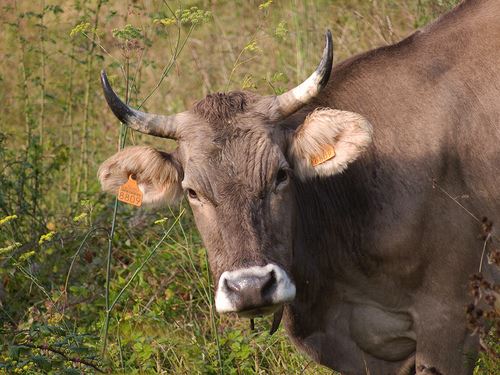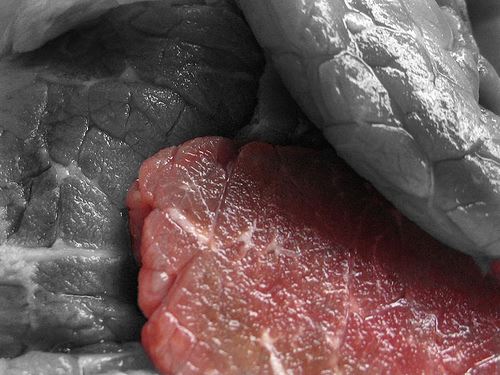The Center for Research and Food Technology of Aragon (CITA) and the Agency for Healthcare Research and Aragon Development (ARAID), both belonging to the Department of Industry and Innovation, Government of Aragon, together with the National Institute of Research and Technology for Agriculture and Food (INIA) and with the collaboration of farmers associations Mountain Brown cattle breed (ARAPARDA) and Cattle Ranchers Aragonese Pyrenees breed (ASAPI) have discovered a new gene variant that enables the detection of animals with a hardness of meat above.

"La vaca: reina de Cantabria (Cerca de Piedras Lenguas 20-09-2009)", Cantabria, North of Spain, by Amaldo Gutiérrez, at flickr.com
The presentation of this study took place in the auditorium of the CITA and has benefited from the intervention of Miguel Angel Garcia Muro, Director of Research and Innovation, together with José Vicente Lacasa, managing director of CITA. Also present M ª Teresa Galvez, director of the ARAID Foundation; Isabel Vasquez, head of Coordination of INIA; Jose Manuel Macarulla, Executive Manager of ARAPARDA and Luis Lascorz, president of ASAPI. The event was attended by farmers, researchers, representatives of agribusiness, and institutional sector.
The study has identified a new gene variant in cattle breeds and Pyrenean Mountain Parda gene Calpastatin (CAST). This gene is involved in the tenderization of the meat. This new variant gene produces an amino acid change in the protein which increases the hardness of the meat. Specifically, the new animals carrying homozygous gene variant have a 22% meat harder than the other genotypes. The application of this new gene variant as a method of predicting meat tenderness in cattle is in the process of registration.

"Carne", by El Instante de soledad, at flickr.com
In his speech, the Director General of Research and Innovation Miguel Angel Garcia Muro stressed "the importance of the food industry as an important driver of our Community" and recalled "the importance that research in this industry." Meanwhile, CITA director José Vicente Lacasa has affected "in the strength of the joint collaboration between public institutions and the private sector," as well as "how important is the relationship between research and the productive, in this case Aragonese livestock
Outstanding Potential applications of this research include the elimination of the gene variant that increases the hardness of the flesh of animals selected for reproduction and inclusion in the catalogs of sires of genotype for these genes, increasing its value and making selection marker-assisted (MAS) for certain lines of animals. Also the certification of a meat or meat product more tender, coming from animals that have no associated genotype hardness.
The effect of this new gene variant found in breeds and Pyrenean Mountain Parda but bioinformatic studies of the sequences deposited in the databases of genes (GeneBank), show that this new mutation exists in cattle breeds distributed throughout the world. This indicates that the use of the application of this new gene variant may be extended to many countries.
Consumers looking to beef meat consistently high quality, considering the most important attributes their nutritional, health, technological quality (color, texture ...) and sensory characteristics (tenderness, flavor, juiciness, color, etc..). These characters are influenced by multiple factors that interact well: driving, race, genotype, feeding, management and stunned before slaughter, slaughter method, method of cooling and conservation. Although customer satisfaction is based on the combination of palatability-flavor, juiciness and tenderness-the emphasis on international research is on this last feature, because it is perceived as more relevant.
Since 2003 CITA develop in the various research linking different feeding patterns and management with meat quality parameters, most notably those of meat tenderness. Thus, the study was conducted in a population of animals under different feeding and management systems, belonging to DNA and tissue bank of CITA and with the financial support of the Government of Aragon and Agricultural Technologies and Resources Program (RTA ) and Permanent Genetic Resources (RZP), both of INIA and with the support of associations and ASAPI ARAPARDA.
I hope this discovery encourage Spanish researchers to continue studying new possibilities in the quality of our lives.
Till soon, kind regards,
Luis.
Sponsored by Costaluz Lawyers.
Please, click down here:
.jpg)